These days, discussions about ChatGPT and artificial intelligence appear in the news almost every day.
I already use various generative AIs, but my children still don’t fully understand what AI or ChatGPT is.
So, based on what I’ve studied and experienced, I’d like to talk about ChatGPT and artificial intelligence so that anyone can easily understand it.
[Image Insertion Request: ChatGPT website main screen or ChatGPT logo]
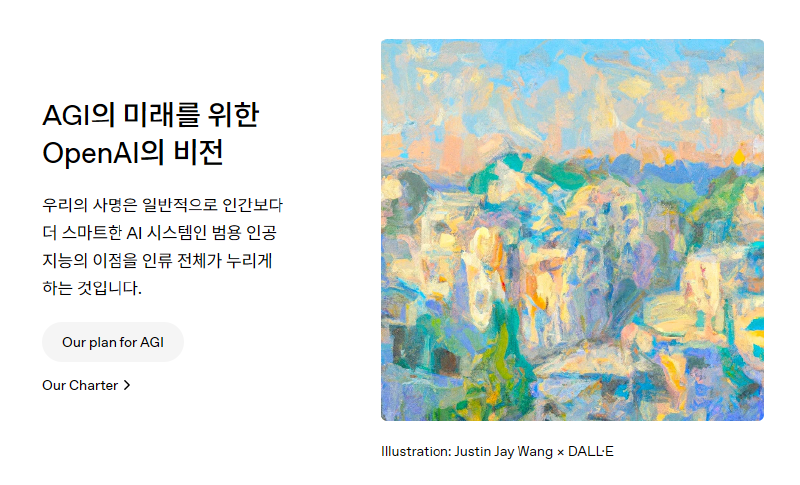
What is ChatGPT?
In short, ChatGPT is an ‘artificial intelligence you can talk to.’ ‘Chat’ stands for conversation, and ‘GPT’ is an abbreviation for the technology Generative Pre-trained Transformer. You can forget this difficult term for now. The important thing is that ChatGPT is a program that talks, answers questions, and writes text naturally, just like a person.
When a company called OpenAI in the United States first released ChatGPT in November 2022, the whole world was surprised. It acquired a million users in just five days, and over 100 million people started using it within two months. The reason is simple: it was truly capable of human-like conversation.
For example, if you ask ChatGPT, “Can you recommend a menu for dinner tonight?”, it doesn’t just reply “Kimchi jjigae.” Instead, it answers contextually and specifically, like “How about warm Kimchi jjigae since the weather is cold? It tastes better if you add tofu and pork. You might want to accompany it with rolled omelet or Kimchi pancake.”

What is Artificial Intelligence?
To understand ChatGPT, you must first know what ‘Artificial Intelligence’ is. AI (Artificial Intelligence) is, as the name suggests, ‘artificial intelligence’ created by humans. Simply put, it’s a technology created to allow computers to think, judge, and learn like humans.
We can see artificial intelligence surprisingly often around us. A smartphone’s voice assistant, the list of movies Netflix recommends, and a car’s navigation system calculating the fastest route based on traffic conditions are all examples of AI technology. However, these AIs were created for a specific purpose, so they could only perform predefined tasks.
But the latest AIs, like ChatGPT, are a little different. They can perform various tasks, not just one. They can do many things: writing, translation, calculation, coding, consulting, and more. This is possible because they have been trained with a massive amount of data. I’ll explain this part in detail in the next section.
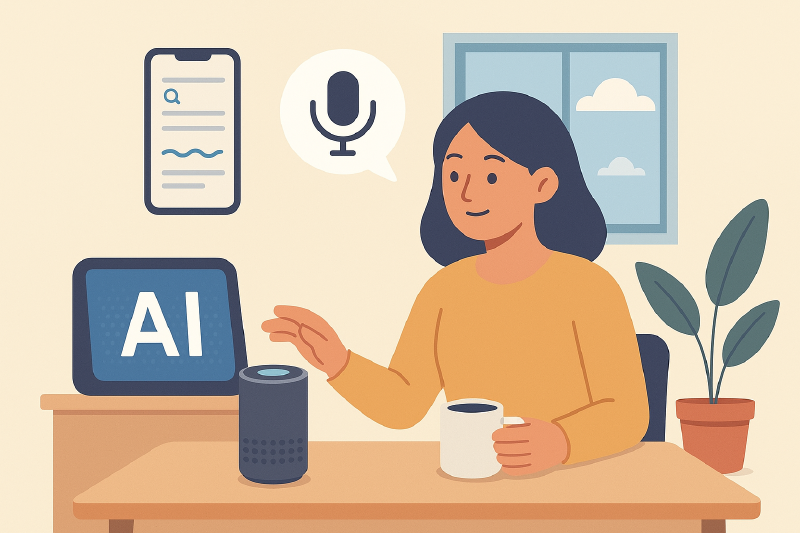
Why Does ChatGPT Have So Much Knowledge and Seem So Smart?
Why Were Previous AIs Only Good at One Thing?
Do you remember the Go match between Lee Se-dol and AlphaGo? Many people were surprised, saying, “AI finally beat a human!” when they watched that game in 2016. But the funny thing is, if you asked the smart AlphaGo, “What should I eat for dinner tonight?” it wouldn’t be able to answer.
Why was that? Previous AIs were specialists custom-made for a specific purpose.
AlphaGo was created solely for Go. It was designed to learn millions of Go game records and only calculate where to place the stone on the 19x19 board. Deep Blue, the chess AI, was the same. It was incredibly good at chess but knew nothing about Go.
This is like an Olympic gold medalist. A swimmer is the best at swimming but might not be as good as an ordinary person at archery. Previous AIs were those ‘single-sport specialized athletes.’
Just a quick note for those curious: AlphaGo and ChatGPT fundamentally use similar technology called a ’neural network.’ The principle of both is the same—they learn patterns by looking at data. However, what they learned was completely different.
AlphaGo only learned ‘how to win at Go.’ It was trained with the sole goal of winning, like, “Placing a stone in this position gives a 65% win rate.” In contrast, ChatGPT learned the ‘overall mechanism of language.’
It’s like having two students: one who only solved thousands of math problems and another who studied every subject—Korean, English, Math, Science, History, and Art. That’s why the results are completely different.
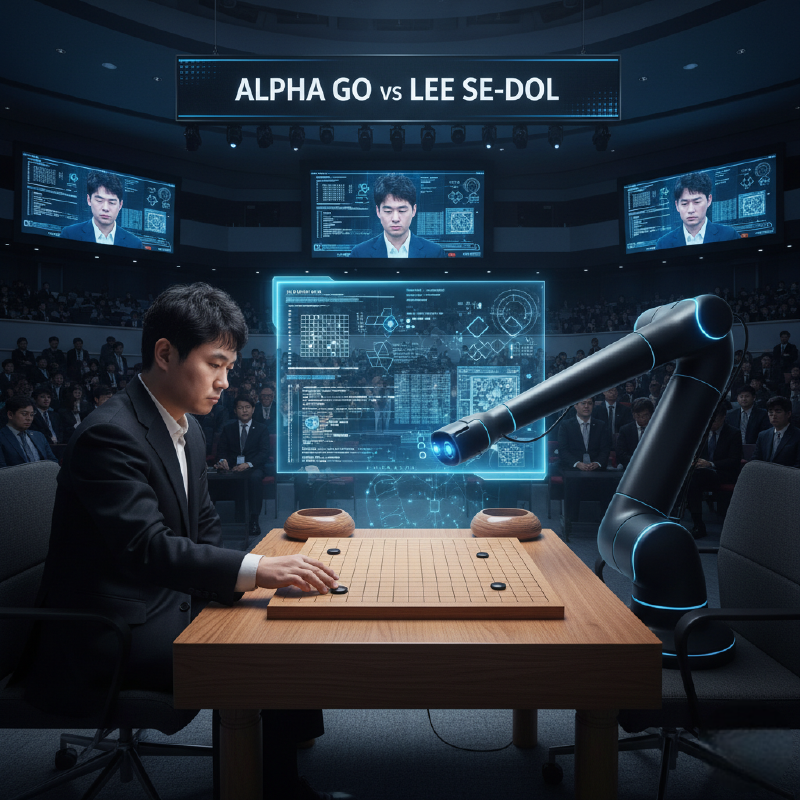
What Makes ChatGPT Different? - The Revolution of Versatility
But ChatGPT is completely different. Writing, translation, coding, solving math problems, cooking recipes, travel plans, counseling… it seems capable of almost everything. How is this possible?
The core is in the fundamental difference in its learning method.
1. Learning with a Massive Amount of General-Purpose Data
While AlphaGo learned only millions of Go game records, ChatGPT learned almost all text available on the internet. This includes every document on Wikipedia, millions of books, academic papers, news articles, blogs, forum discussions, and code repositories. The estimated amount of training data is about 30 billion pages, an amount a person could never finish reading in a lifetime.
Imagine this. If you read every book in a library, you would know history, science, literature, and cooking recipes, right? That’s exactly what ChatGPT is like.
2. Learning to Understand Language Patterns and Context
More importantly, it’s ‘how’ it learned. ChatGPT didn’t just memorize information; it learned the operating principle of language itself.
Let’s take an example. When we say, “The weather is,” high-probability words to follow are “good,” “bad,” or “cold.” When we say, “Apples are,” expressions like “red,” “delicious,” or “a fruit” follow. ChatGPT learned these patterns by reading billions of sentences.
Furthermore, it understands context. Think about the word “배” (Bae) in Korean. The meaning of ‘배’ is completely different in “배가 아프다” (My stomach hurts) and “배를 탔다” (I rode a boat). The former is a body part, and the latter is a vehicle. ChatGPT can accurately distinguish this difference by looking at the surrounding context. It knows that ‘배’ is ‘stomach’ in “I ate too much lunch, so my stomach hurts” and ‘boat’ in “I took a boat to go to Jeju Island.”
This is similar to how you learned Korean when you were young. You didn’t learn by memorizing grammar books but by naturally acquiring the rules of language through countless conversations and texts.
3. Transformer - The Magical Technology
Do you know what the ‘T’ in GPT stands for? It’s short for Transformer. This is the core technology that made ChatGPT possible.
To simplify the technical jargon, the Transformer is a technology that simultaneously grasps the relationships between all words in a sentence.
Previous AIs read sentences one by one, sequentially, from the beginning. When reading the sentence, “I met a friend yesterday and watched a movie,” it looked at ‘I,’ then ‘yesterday,’ and so on, like reading a book line by line.
But the Transformer is different. It looks at all the words in the sentence at once and simultaneously grasps, “Ah, ‘I’ is connected to ‘met,’ ‘a friend’ is related to ‘met,’ and ‘a movie’ is connected to ‘watched’.” It’s like seeing how puzzle pieces fit together at a glance.
Thanks to this technology, ChatGPT can maintain the context of a long conversation and accurately understand the intent of complex questions.
4. The Magic of Scale - Bigger Means Smarter
There is one surprising fact. The latest version of ChatGPT, GPT-4, is known to have about 1.7 trillion parameters (variables). Parameters are essentially the AI’s ‘brain cells.’
Let’s compare. The initial GPT-1 had 100 million, GPT-2 had 1.5 billion, GPT-3 had 175 billion, and GPT-4 has over 1 trillion… As it grew larger, the things the AI could do increased exponentially.
This is like LEGO blocks. With 100 blocks, you can build a small house, but with 100,000 blocks, you can build a castle, and with a million blocks, you can build a city. As the scale of the AI increased, capabilities that were previously impossible ‘suddenly’ began to appear. Just as LEGO blocks allow for complex structures beyond a certain number, unexpected new abilities emerged spontaneously in the AI once it surpassed a certain scale.
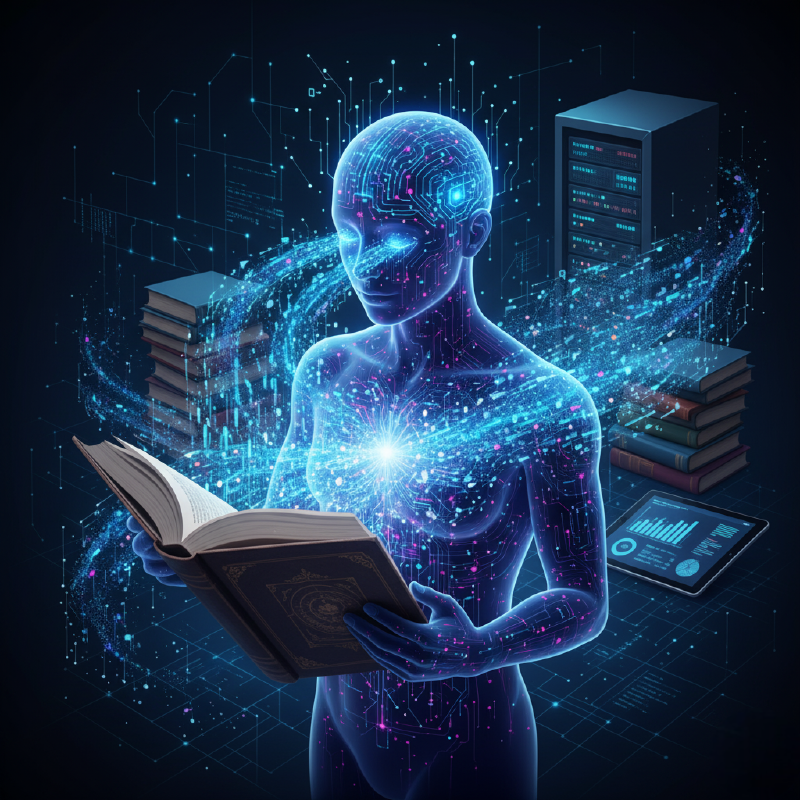
Generative AI - Opening the Door to a New Era
Let’s define an important term here. An AI that can ‘generate’ text, images, voice, video, etc., like ChatGPT, is called ‘Generative AI.’
Let’s re-summarize the difference between conventional AI and Generative AI:
Conventional Specialized AI: “What is this?” (Analysis, Classification, Discrimination)
- AlphaGo: “This move has a 78% chance of winning.”
- Image Recognition AI: “This photo is a cat.”
- Speech Recognition AI: “What you said is ‘Hello’.”
Generative AI: “Please create this for me!” (Generation, Creation, Suggestion)
- ChatGPT: “I will write a poem about a cat…”
- Midjourney: “I drew you a dreamy cat picture.”
- Voice Generation AI: “I will read it out in a natural voice.”
To use a simple analogy, if conventional AI was a ‘classifier’ or ’evaluator,’ Generative AI has become an ‘author,’ ‘painter,’ or ‘musician.’ The era has arrived where AI, which only made judgments, can now create something itself.
From now on, I will collectively refer to AIs with this creative ability, not just ChatGPT, as ‘Generative AI.’
What are the Different Generative AI Services Available?
ChatGPT is the most famous, but various Generative AI services exist. Each has its own characteristics and strengths, so you can choose based on your purpose.
Conversational AI Services
ChatGPT (OpenAI) The first conversational AI to gain mass popularity. It can handle almost all text tasks such as writing, translation, coding, and summarization, and the latest version can even analyze and generate images. There are free and paid versions (ChatGPT Plus).
Claude (Anthropic) Similar to ChatGPT but is evaluated as providing more thoughtful and accurate answers. It is particularly strong when analyzing long documents or answering complex questions.
Gemini (Google) Generative AI created by Google, formerly known as Bard. It integrates with Google Search to effectively utilize the latest information and offers unique features like summarizing YouTube videos.
Copilot (Microsoft) AI developed by Microsoft, based on ChatGPT technology, but it can search the internet in real-time by linking with Bing Search.
Image Generation AI Services
Midjourney Creates surprisingly high-quality images from text descriptions alone. It is especially strong at creating artistic and fantastical images. If you input “a futuristic city against the sunset,” it creates a truly wonderful picture.
DALL-E (OpenAI) The image generation AI from OpenAI, which also created ChatGPT. It excels at creating natural and realistic images.
Stable Diffusion An open-source image generation AI that anyone can use for free. You can create an unlimited number of images if your computer performance is good.
Other Specialized Services
GitHub Copilot An AI that assists programmers in writing code. It has a magical feature that automatically completes code just by adding a comment.
Runway AI specialized in video editing and generation. It can automatically remove backgrounds or create short videos from text.
Notion AI An AI built into the memo app Notion that enhances work productivity by drafting meeting minutes, organizing ideas, and summarizing documents.
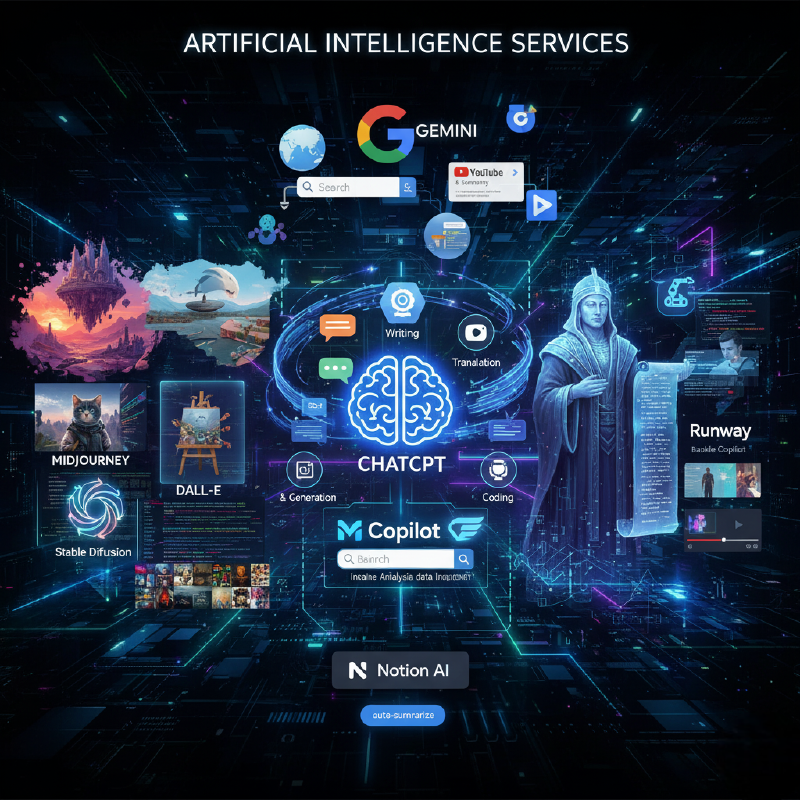
How Will AI Services Continue to Expand?
It’s only been about two years since Generative AI emerged, but the speed of change is truly astonishing. It’s rapidly seeping into every corner of our lives.
Do you remember the ‘Ghibli style’ craze on social media a while ago? The service that turned users’ photos into paintings that looked like they belonged in a Hayao Miyazaki movie went viral. Many people first experienced AI image generation technology by transforming their friends, pets, and even neighborhood scenery into the Ghibli style. As such, AI is rapidly expanding from being merely a tool for experts to a fun plaything and a practical work tool in everyday life.
Integration with Work Tools
Microsoft has added ‘Copilot’ to Word, Excel, and PowerPoint, and Google has incorporated AI features into Gmail and Docs. The era has arrived where you can ask it to “summarize last week’s meeting” and it automatically generates the document.
The Transformation of Education
AI tutors have emerged, like Khan Academy’s ‘Khanmigo,’ that teach students at their individual level. AI-based English learning apps are also gaining popularity in Korea.
Medicine and Creative Fields
AI analyzes X-ray or MRI images to detect early cancer cells, and creators use AI to speed up video editing, thumbnail creation, and scriptwriting.
Customer Service and Personal Assistants
Many companies use 24/7 AI chatbots for customer service, and personal AI assistants that learn your schedule and preferences are expected to develop further. Features like OpenAI’s ‘GPTs’ allow anyone to create their own customized AI.

How Should Our Children Grow Up With AI?
An Honest Parental Concern
Any parent these days has probably worried about this: “Should I install ChatGPT for my child… or not?”
If I install it… I worry that they’ll ask it everything and lose their ability to do things independently. If I don’t install it… I worry that other kids will use AI well to get good results, and my child might fall behind, having to do everything manually.
My conclusion, after listening to various people’s opinions on YouTube, is that this concern existed before.
When computers first came out, and when smartphones first appeared, parents had the exact same worries. But what do we see now? We can’t conclude that children who used computers and smartphones well only brought bad results. The important thing wasn’t ‘whether or not to use it,’ but ‘how to use it.’
The same goes for AI. If we can’t avoid it, the answer is to teach them how to use it properly.
How to Use AI Without Dependency, Fostering Independent Thought
So, how can we ensure children use AI properly without becoming dependent on it? The core, I believe, is to encourage them to see AI not as a ‘machine that gives answers,’ but as a ’tool to think with.’
1. The Habit of Thinking for Themselves First
Before asking the AI directly, it seems important to give them time to think for themselves.
“Before you ask ChatGPT, what are your thoughts? Can you write them down on paper?”
This way, the child will use the AI as a supplementary tool, not as a dependency. By organizing their own thoughts first and comparing them with the AI’s answer, they can gain a deeper understanding.
2. Requesting ‘Explanations’ Not ‘Answers’
A common mistake in using AI is asking, “Give me the answer to this problem.” This only leads to copying and no real learning.
Instead, how about teaching them this way:
- ❌ “Give me the answer to math problem number 5.”
- ✅ “What concepts do I need to know to solve math problem number 5? Just give me a hint.”
- ✅ “Explain this concept so I can understand it easily.”
Utilize AI as a private tutor—a being that helps them understand, not just a source of answers.
3. Critically Reviewing the AI’s Answer
AI is not perfect. Sometimes it says false information plausibly. So, it seems important to instill the habit in children to “check if what the AI said is really correct.”
Comparing it with textbooks, reference books, and reliable websites would be helpful. In this process, the child can develop the ability to judge information.
4. Converting the AI’s Output into ‘My Own Language’
Copying the text written by the AI as it is is plagiarism. Instead, it would be good to have them read and understand the AI’s answer, then rewrite it in their own words.
“The AI explained it this way, but how would you explain it to your friend?”
This way, they reference the AI, but the final output is completely their own.
5. Taking Time to Do Things Without AI
Sometimes, having the experience of solving problems without AI is necessary. I believe this will be a time for the brain to build the ‘muscle’ of thinking independently.
If they develop the habit of asking the AI for everything, they might panic in an exam room or a situation where they cannot use AI. I believe they must acquire the fundamentals on their own.
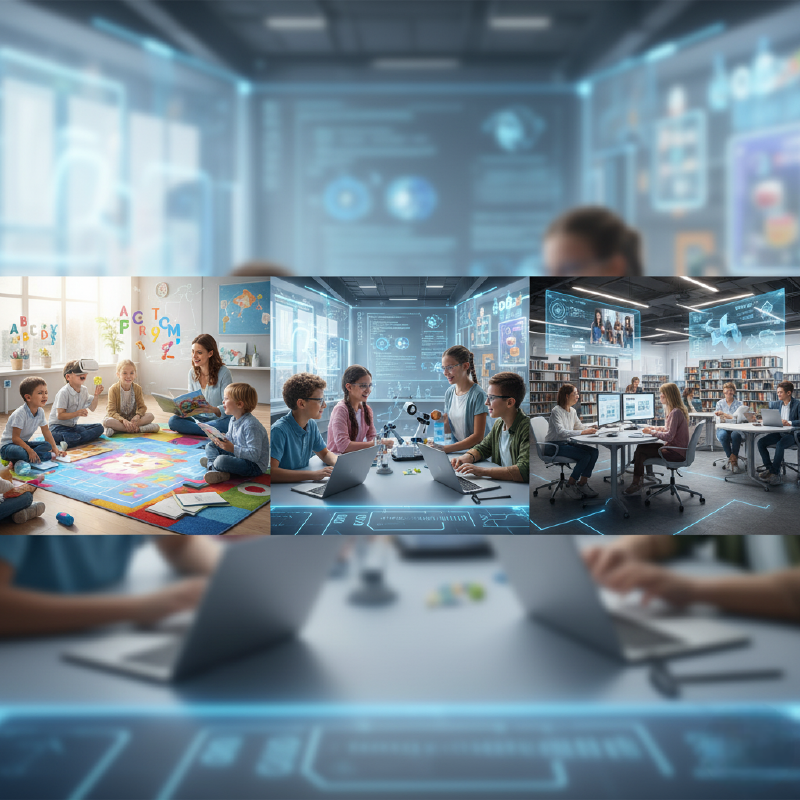
Skills That Have Become Even More Important in the AI Era
It may seem paradoxical, but as AI advances, certain human abilities become even more critical.
1. The Power of Questioning I believe the core competence in the AI era is ‘asking good questions.’ Even with the same AI, the result is vastly different depending on how you ask the question. A good question seems to be clear, specific, and contextual.
For example:
- Bad Question: “Write me a history report.”
- Good Question: “Explain why the creation of the Korean alphabet (Hangeul) in the Joseon Dynasty was revolutionary, connecting it with the social situation at the time. Keep the level appropriate for a middle school student.”
2. Critical Thinking AI can be wrong. Sometimes it tells plausible lies (this is called ‘Hallucination’). Therefore, critical thinking—judging, “Is this really correct?"—has become more important.
3. Creativity and Emotionality AI learns patterns, but it doesn’t seem to truly create something brand new. Original ideas, artistic sense, and empathy remain the domain of humans.
4. Collaboration and Communication Knowing how to collaborate with AI and how to collaborate with people are both important. In the AI era, the core is still people meeting and creating something together.
Ultimately, Balance is the Answer
We can neither absolutely block AI nor let our children use it indiscriminately. I believe the answer is ’learning together.’ Parents should try using AI, experiment with it with their children, and learn through trials and errors.
The future our children will live in is clearly a world shared with AI. Our generation’s challenge is to raise them to be people who know how to use AI as a tool yet do not lose their own thoughts and creativity.
Conclusion
The memory of first encountering ChatGPT is still vivid, but now it has become a tool I use every day. When I have a question, conversation comes first rather than searching, and I get help from AI when I need to translate an article into English.
Generative AI is no longer a distant future story. It is already here with us and is rapidly developing. The important thing is not to be afraid or reject it, but to contemplate how to wisely use this new tool and actually use it.
In this unstoppable flow of the AI era, let’s not fear or reject it. If we approach it slowly with the mindset of making a new friend, I believe it can surely become a colleague and friend that greatly benefits us. ;-)
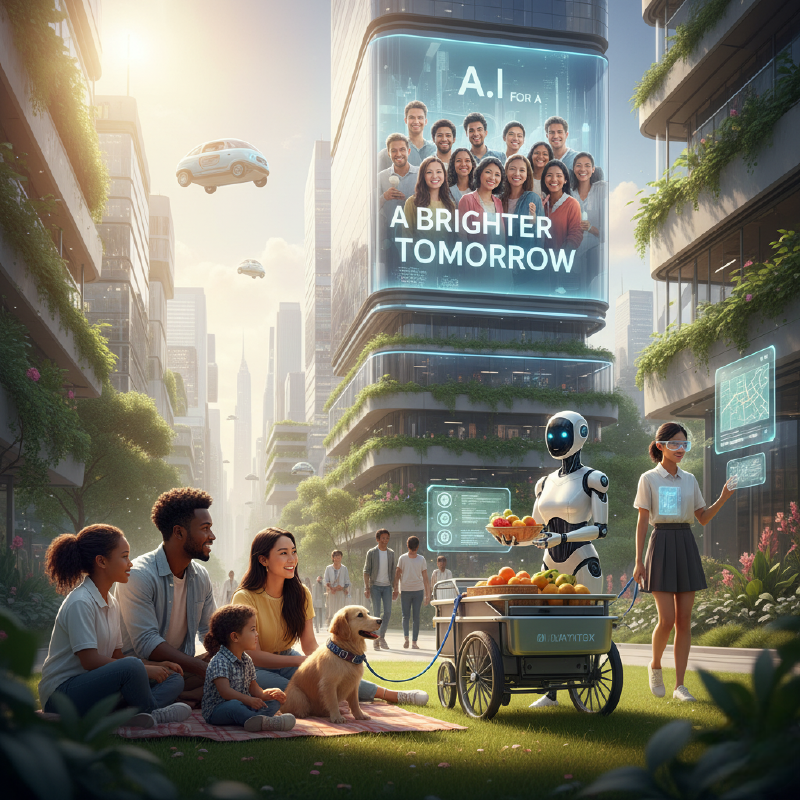
If this article was helpful, please share it with others. If you have any questions about AI, please feel free to ask in the comments!